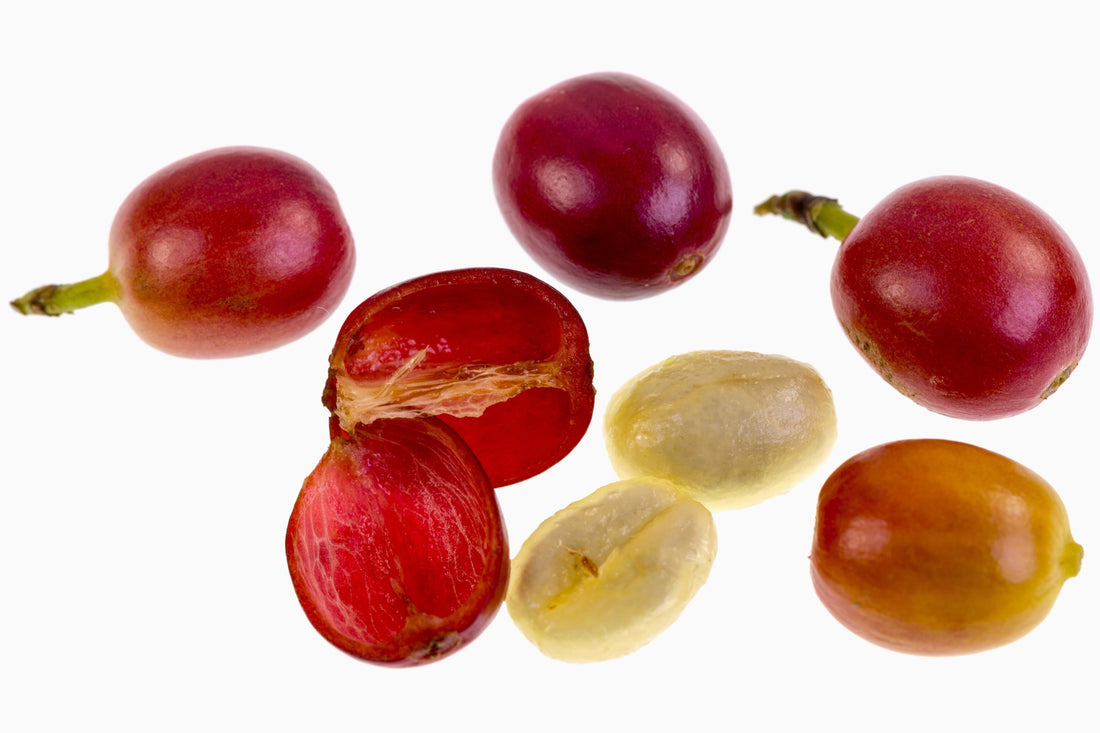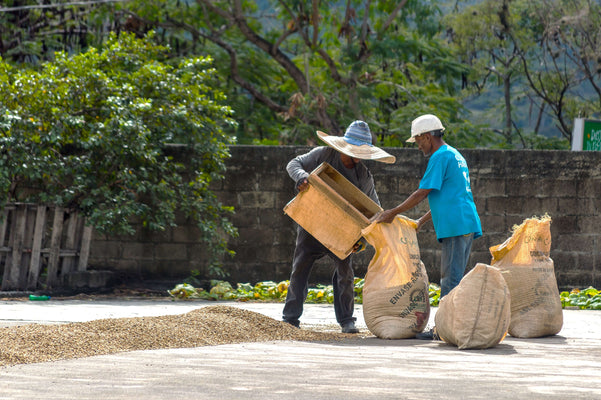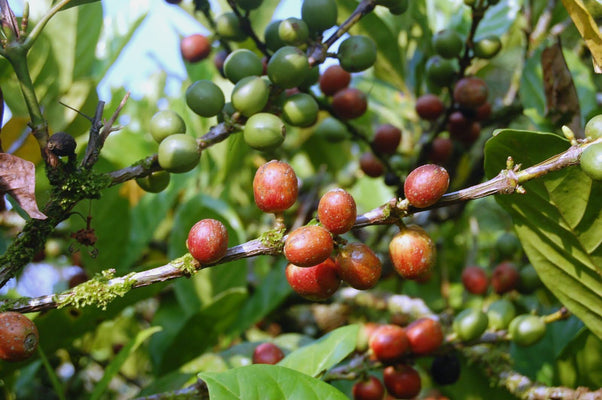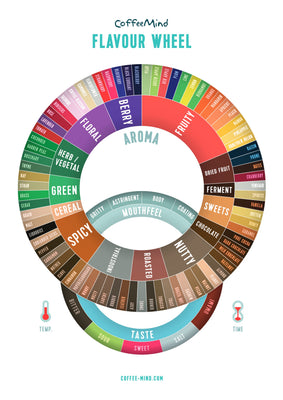
Anatomy of Coffee
tai attitude4 min read
Most of us are familiar with coffee beans, how they look or smell, and their use to make the beverage called coffee. What some of us are unfamiliar with is where they come from. That the coffee beans we use are not grown beans but are actually seeds, which come from coffee fruits.
The story so far: The coffee fruit (also known as coffee cherry or coffee berry) was harvested, went on to be processed, and then roasted to become the brown-coloured coffee bean, which we use to make the beverage known as coffee.
In other words, the aromatic morning Java we love to drink was once fruit.
In continuing to learn more about coffee, this article's focus is on the coffee fruit's structure. Additionally, we will learn a thing or two about peaberries as well.
The coffee fruit structure

From the outer to the inner layer:
The coffee fruit's outer skin is called the exocarp. The coffee fruit's skin is usually thicker than its flesh.
Beneath it is a layer of pulp, also known as mesocarp. This is the flesh of the coffee fruit.
Followed by a thin layer of mucilage (a.k.a. pectin), referred to as part of the mesocarp as well. Mucilage is a sticky fruit material that remains on the seed after pulp removal.
Next is parchment (a.k.a. hull), a paper-like envelope covering the seed. Also known as endocarp.
Skin, pulp, mucilage, and parchment are removed during the coffee processing stage as by-products. When dried, all four of the skin, pulp, mucilage, and parchment are collectively referred to as the husk or pericarp.
There is another thin layer of silver skin covering the seeds, alternatively known as the epidermis. Silver skin remains coated on the seed until the coffee roasting stage, where high heat will shed it off as a by-product, referred to by then as chaff.
Lastly, the seed, which is called the green bean and also referred to as the endosperm. In this green bean form, coffee is traded as a commodity from coffee farms to coffee roasteries.
We get it; the terms can get confusing, but just know that most of the terms here mean the same thing; they just happen to have different terminology depending on the field of use. Let us break it down into a table, so we can have a clearer understanding.
 For coffee industry professionals, there are generally six terms to remember, from outer to inner layer: skin, pulp, mucilage, parchment, silver skin, and green bean. These terminologies are used in the coffee industry.
For coffee industry professionals, there are generally six terms to remember, from outer to inner layer: skin, pulp, mucilage, parchment, silver skin, and green bean. These terminologies are used in the coffee industry.
When skin, pulp, mucilage, and parchment are dried, they are collectively referred to as husks.
For scientifically related professionals, from outer to inner layer: exocarp, mesocarp, endocarp, epidermis, and endosperm. These terminologies are communicated across all scientific fields of coffee.
Exocarp, mesocarp, and endocarp are collectively known as the pericarp.
What is peaberry?
Typically, there are two seeds (beans) in one coffee fruit. However, in about 7% of the world's coffee fruit, due to natural genetic mutation, there can only be one seed in one coffee fruit. This one-seeded seed is called a peaberry.
The name peaberry derives from caracolillo, which means snail in Spanish, due to its resemblance. Peaberry, in English, indicates its shape's resemblance to a pea.
In coffee cultivation, there are two ways to obtain peaberries: either they are sorted out from the crop or the coffee plant could be genetically modified to produce peaberries. Not all coffee farms export peaberries, but for those that do, peaberries are often sold with a higher price tag for their quality and labour costs.
Appearance-wise, when compared to a normal bean, the peaberry has no flat side, is rounder, and is overall denser and harder.
 Peaberry green coffee bean
Peaberry green coffee bean
 Roasted peaberry coffee bean
Roasted peaberry coffee bean
Peaberry is more nutrient-dense than its normal bean counterpart due to the fact that one seed absorbs most of the nutrients from the coffee fruit instead of two seeds. Being more nutrient-dense indicates it has greater potential to develop richer flavours.
For coffee roasters, peaberries are more even in heat transfer during roasting due to their rounder shape, and the higher nutrient profile they have denotes higher sugar content and precursors available than normal beans. A skilled roaster will adjust their roast based on the afro mentioned and beyond.
For baristas, peaberries brew pretty much the same as any other coffee bean—with a slight adjustment, but nothing too drastic. Though, generally speaking, peaberries rounder shape and higher density and hardness do produce a coarser grind and fewer fines from the coffee grinder when compared to grinding normal beans at the same setting. A skilled barista will adjust their brew accordingly for the best cup experience.
Peaberry coffee can be seen being offered in coffee shops or online seasonally from time to time; it is neither difficult nor rare to find. Alternatively, as peaberries exist naturally in 7% abundance, this means you can always sort them out yourself from your coffee beans too; they're in there.




2 comments
Hi Cozplay, This is because the coffee fruit as a whole is not edibly delicious to begin with. This is apparent when compared to other fruits mankind harvests to eat, such as berries, stone fruits, etc.
I presume our ancestors realised this and therefore found many other ways to enjoy it instead. Culturally, these have been passed down, some of which are what you mentioned.
I hope this answers your question. Cheers =)
Author/Barista Tai
I’m wondering why the whole coffee berry (coffee fruit, coffee cherry) is not used to make a beverage or a food. The beans are used to make a beverage (and sometimes a food such as chocolate covered espresso beans), the husks are used to make a beverage (qishr), and the outer fruit layer is used to make a beverage (cascara) and also can be eaten. So why not use the whole coffee cherry?